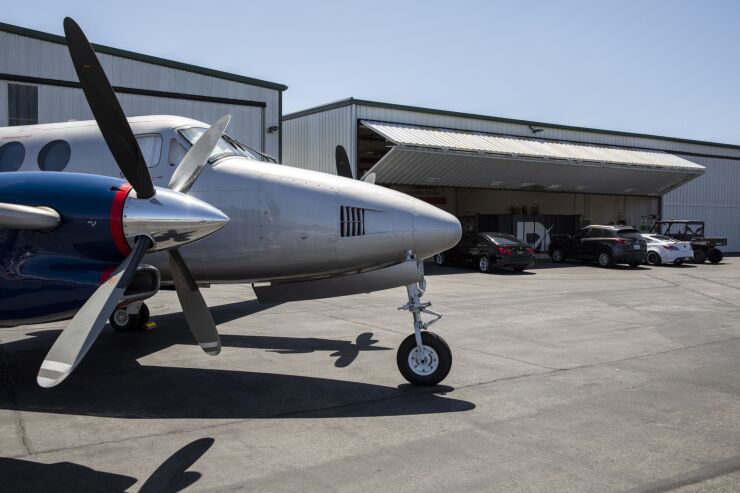The hard market for
Overall, the aviation market mirrors that of the overall property and casualty insurance market: hard hit by a series of natural disasters in recent years, including numerous hurricanes, tornados, and wildfires. Social inflation is also driving the hard market with higher claims driven by increased litigation, more plaintiff-friendly legal decisions and sizable compensatory jury awards. Aviation also faces other significant challenges that are affecting rates, notably a rise in maintenance and replacement costs, high attrition rates and challenges attracting and retaining
Types of aviation coverage
Aviation insurance must be customized to reflect the type and age of the aircraft, its usage and where it’s stored. Pilot age and experience, along with safety ratings for both the pilot and the aircraft, are also key considerations when developing policies and determining rates. The level of risk tends to be inversely proportional to pilot experience and preparedness.
Insurance needs for a personal craft operated by a flying enthusiast will differ significantly from that of a flight school, crop duster or fractional aircraft provider, among others. Regardless of the type of aircraft or type of business, coverage needs typically cannot be met with a single policy. At a minimum, aircraft owners should consider the following types of coverage:
1. Ground risk hull insurance not in motion
This coverage protects owners from damages sustained when the plane is not in motion. Covered damages may include fire, hail and windstorms, hangar collapse and theft or vandalism.
2. Ground risk hull insurance in motion
In Motion covers damages sustained while the plane is in motion on the ground, excluding takeoff and landing.
3. In flight
Despite its name, in flight insurance covers damages sustained while the plane is both in flight and on the ground, including during takeoff and landing. In flight insurance is a more comprehensive and expensive offering, so owners should assess whether it makes sense to purchase separate policies or a single plan.
4. Third-party liability
This coverage protects against claims made by owners of property damaged by an aircraft during takeoff, landing or in a crash.
5. Passenger liability
Passenger liability insurance provides compensation if passengers onboard the aircraft are injured or killed during a flight. Rates for passenger liability coverage are determined by how many passengers the plane can hold.
The cybersecurity threat
Cyber insurance is increasingly important for commercial aviation and small aircraft owners as
The aviation industry is a primary target for cyberattacks, making airlines and individual owners vulnerable to data breaches and business interruption losses. Commercial airlines have amassed substantial amounts of personal identifying information for passengers and employees, making them attractive targets for data theft, malware and ransomware incidents. Business interruption for airlines has the potential to wreak havoc on transportation services, the supply chain and the overall economy. Even more concerning is the potential for hackers with more malicious objectives, such as threatening flight safety by interfering with flight controls.
Agents and brokers must work closely with their aviation clients to assess the owner’s or business’ cyber preparedness and design cyber policies that match coverage to the potential risks. Even the most robust cybersecurity system is not immune to cyber breaches, so it’s essential that aircraft owners and commercial aviation businesses understand their vulnerabilities, including the potential for monetary losses and damage to brand and reputation. Experienced agents and brokers can provide critical risk management and risk mitigation guidance and keep owners and businesses apprised of changing regulatory requirements, when applicable.
Ukraine fallout
The full impact of the Russian invasion of Ukraine on the aviation insurance market is unknown, but airline lessors are experiencing disruptions and suspensions in service, as well as property damage. According to
The fallout from the war in Ukraine will affect the broader P&C market as well, as rising fuel and supply costs lead to higher repair and replacement costs across industries, resulting in decreased capacity across all lines of coverage. Coupled with the potential for high aviation insurance claims from the war, the aviation insurance market may see further increases in premiums and exclusions, and some insurers may exit the market entirely.
Combined, these complex and costly sets of circumstances underscore the need for experienced insurance professionals who know aviation and understand the insurance market. With such a broad range of insureds, it takes in-depth knowledge of the industry to fully engage with clients and meet their unique insurance needs. Through artificial intelligence-assisted risk assessment and predictive analytics, insurers will be able to customize plans with even greater accuracy to truly reflect the needs of their clients.
New challenges and risks will also evolve, requiring detailed knowledge of all aspects of the industry to protect the interests of individual aircraft owners, commercial businesses, and insurers alike.






